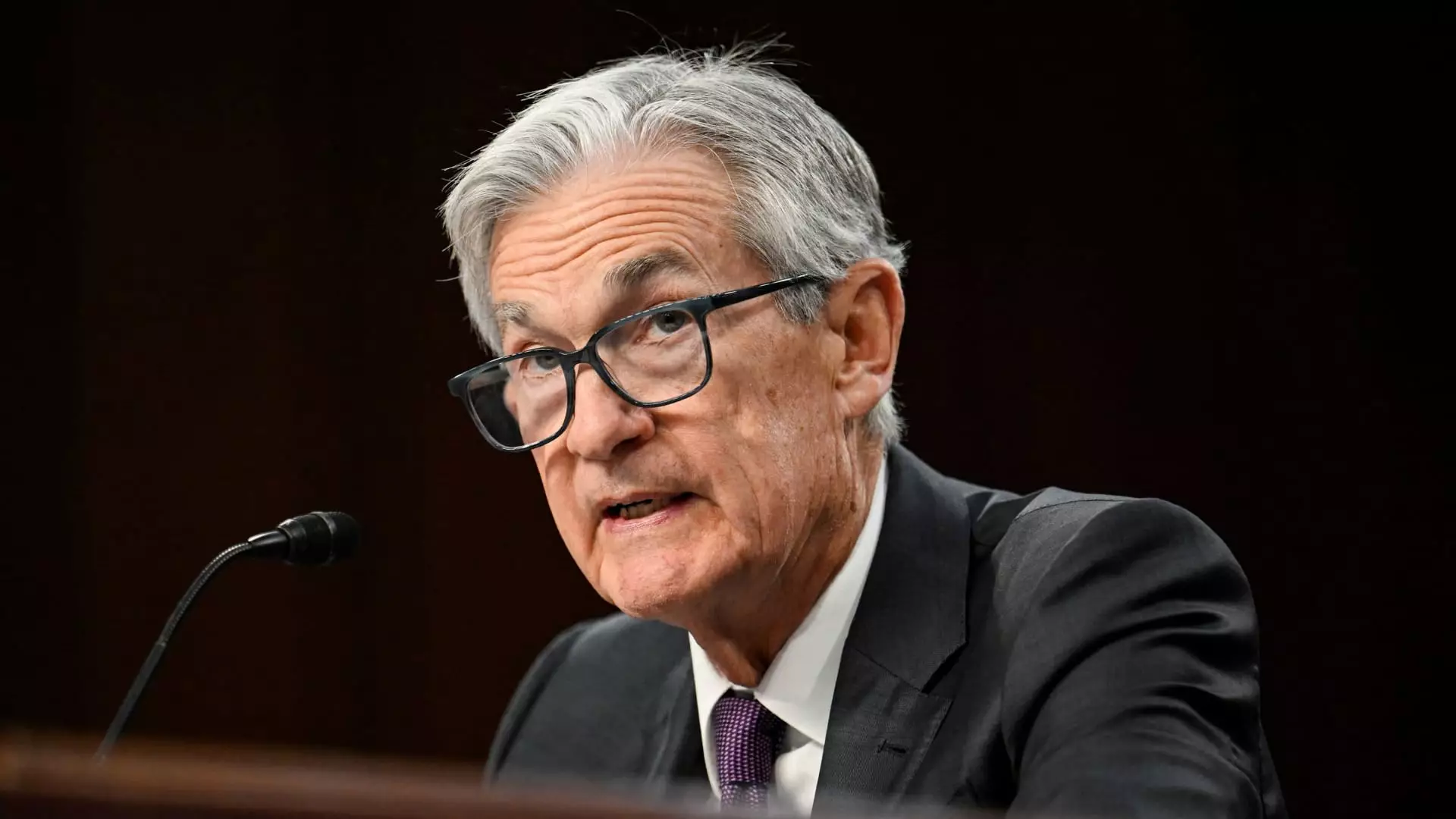In the intricate tapestry of American economic policy, the recent statements from Federal Reserve Chairman Jerome Powell have underscored the importance of patience in monetary policy. His remarks reflect a compelling strategy: a decision to take a wait-and-see approach amidst the volatility triggered by President Donald Trump’s aggressive policy shifts. While Trump’s initiatives, notably on tariffs, have sent ripples of anxiety through financial markets, Powell’s comments suggest a deliberate strategy to gauge the economic landscape before committing to changing interest rates.
This measured stance appears prudent given the complexity of Trump’s agenda. When a president introduces sweeping changes in critical sectors such as trade, immigration, fiscal policy, and regulation, predicting their cumulative impact is akin to navigating a minefield. Powell’s emphasis on patiently assessing how these intersecting policies pan out highlights a shrewd understanding of economic signals in the face of chaos.
Consumer Confidence: A Double-Edged Sword
While Powell expresses optimism about a “solid labor market” and inflation inching towards the Fed’s 2% target, the sentiment is marred by uncertainty. Consumer confidence, an essential pillar of economic activity, seems rattled by concerns about inflation caused by tariff discussions. The paradox here is that while the labor market shows signs of strength—with wage growth slightly outpacing inflation—the prevailing anxiety about inflationary pressures could destabilize this equilibrium over time.
The Fed’s reliance on sentiment surveys to predict economic trends is critical, yet it risks being swept away by political tides. This is particularly concerning for center-right audiences who value pragmatic economic strategies. A thriving job market is both a boon and a vulnerability; we cannot overlook that if workers start to feel insecure about their purchasing power, consumer spending—a key driver of economic growth—could falter.
The Impact of Tariffs: An Economic Tightrope
One cannot discuss Powell’s statements without delving into the seismic effects of Trump’s tariff policies. These tariffs are not just economic tools; they serve a broader narrative that can either boost or hinder national economic health. The current conversations about tariff impositions and their effects on pricing and wages introduce complexities that are perhaps unmatched in recent history.
The perception among traders, which anticipates multiple interest rate cuts this year due to these uncertainties, reflects a market responding not just to data, but to fear, speculation, and political rhetoric. When Powell insists that the Fed is not on a “preset course,” it raises an essential point: economic policies should be dynamic and responsive, a sentiment that resonates with center-right liberals who advocate for measured flexibility in economic protocols over rigid adherence to past frameworks.
Inflation: A Bumpy Road Ahead
The Federal Reserve’s preferred gauge indicates that inflation rates hover around 2.5%, a mark that seems under control, yet Powell’s prophetic words caution against complacency. Despite the U.S. economy’s relative strength, the trajectory ahead seems less than certain. Analyzing Powell’s remarks leads one to consider the longer-term implications of returning to inflation’s target rate. His statements suggest that any hope for a seamless transition back to stable inflation could prove wishful.
This instability is particularly alarming for those of us who advocate for responsible fiscal policies and economic growth intertwined with sound regulatory practices. Continuous inflation or even a return to unwanted deflation could unravel gains made in the job market and consumer confidence, resulting in a net loss for the economy.
The Labor Market: A Cautious Optimism
The February report showing 151,000 nonfarm payroll gains, albeit slightly below projections, exemplifies the complex interplay between growth and expectation. Powell’s assertion that the labor market is “solid and broadly in balance” underlines a resilience that is admirable but requires ongoing vigilance. In an economic climate shaped by dynamic political changes, abandoning caution could lead to detrimental consequences, especially for individuals on the lower rungs of the economic ladder who are particularly sensitive to shifts in job security and wage fluctuations.
A balanced approach to monetary policy remains critical today more than ever. Recognizing that both opportunities and risks exist within the current economic climate can empower policymakers to make informed decisions. In the face of Trump’s transformative presidency, navigating economic policy with a careful eye on its multifaceted implications could very well determine the trajectory of American prosperity in the years to come.

